

[HOME]
[WEB ALBUMS]
[PROJECTS]
[ARCHIVE]
[DOWNLOADS]
[LINKS]
PROJECTS
Project MK15: Masers; the OH molecule detection in NML cygni / OH80.8-1.9
First results tracking OH source NML Cyg.
This source has many names. I also found the names;
V1489 Cyg
IRC+40448
AFGL2650
OH80.8-1.9
NML Cyg; discovered in 1965 by Neugebauer, Martz, and Leighton
But first some construction developments.
A 3 phase motor is installed and via a reduction ratio of 50 to 1, a wheel (from a forklift truck) running on the concrete wall is moving the telescope.
The wheel is pushed down with 160kg, but that seems just not always sufficient. It works just like the very old Solex motor on a bike.
The elevation is still a problem. Because of the low ratio the motor cannot lift the 1 ton dish; even with 1kW pushing.
To compensate the weight I have made two counterweights of 220kg each, but that seems still not sufficient.
The dish cannot be lifted by motor alone below 65 deg; I have to help by turning the wheel.
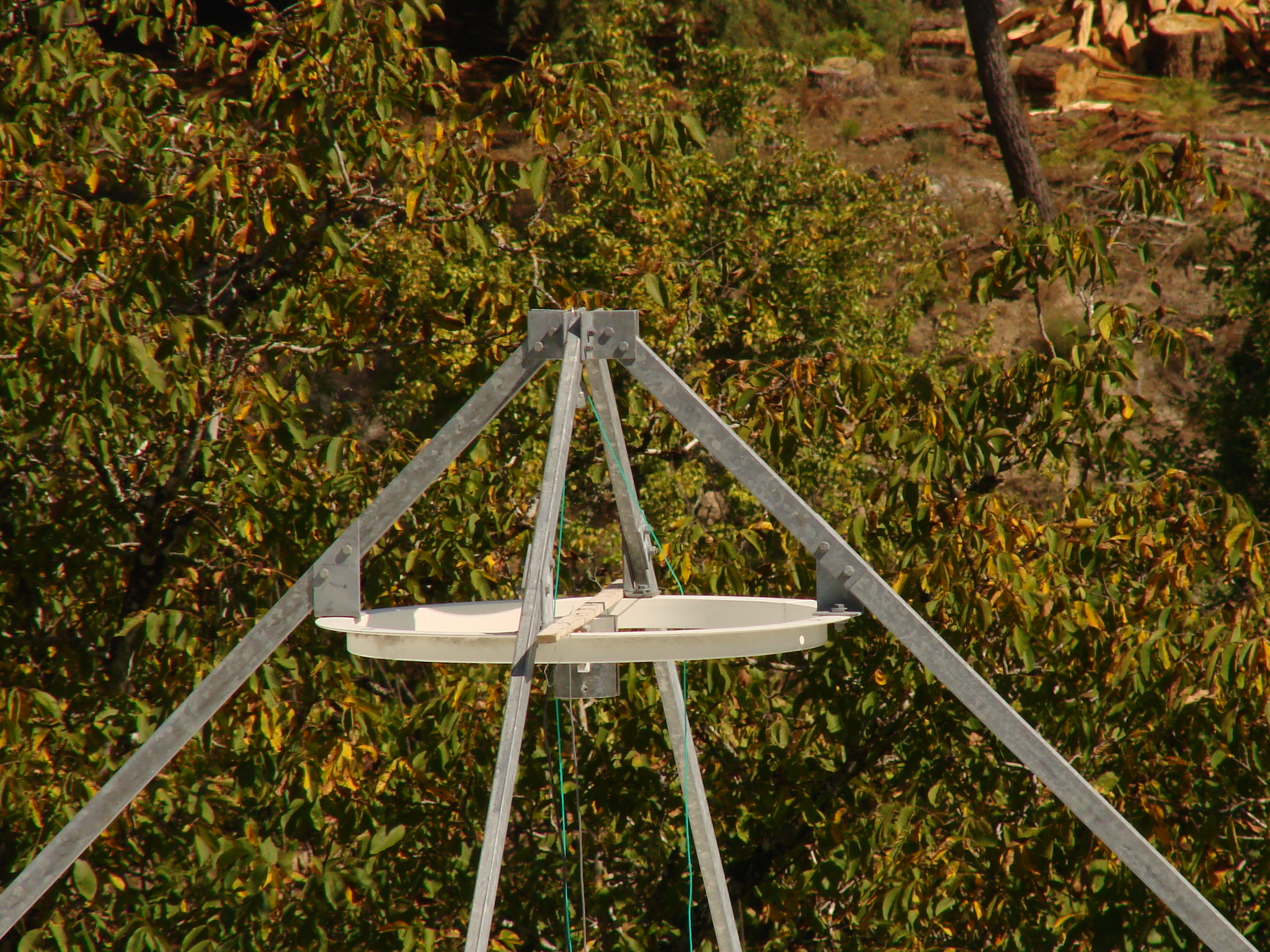
Fig.1 - Sao Giao Radio Telescope with OH maser feed
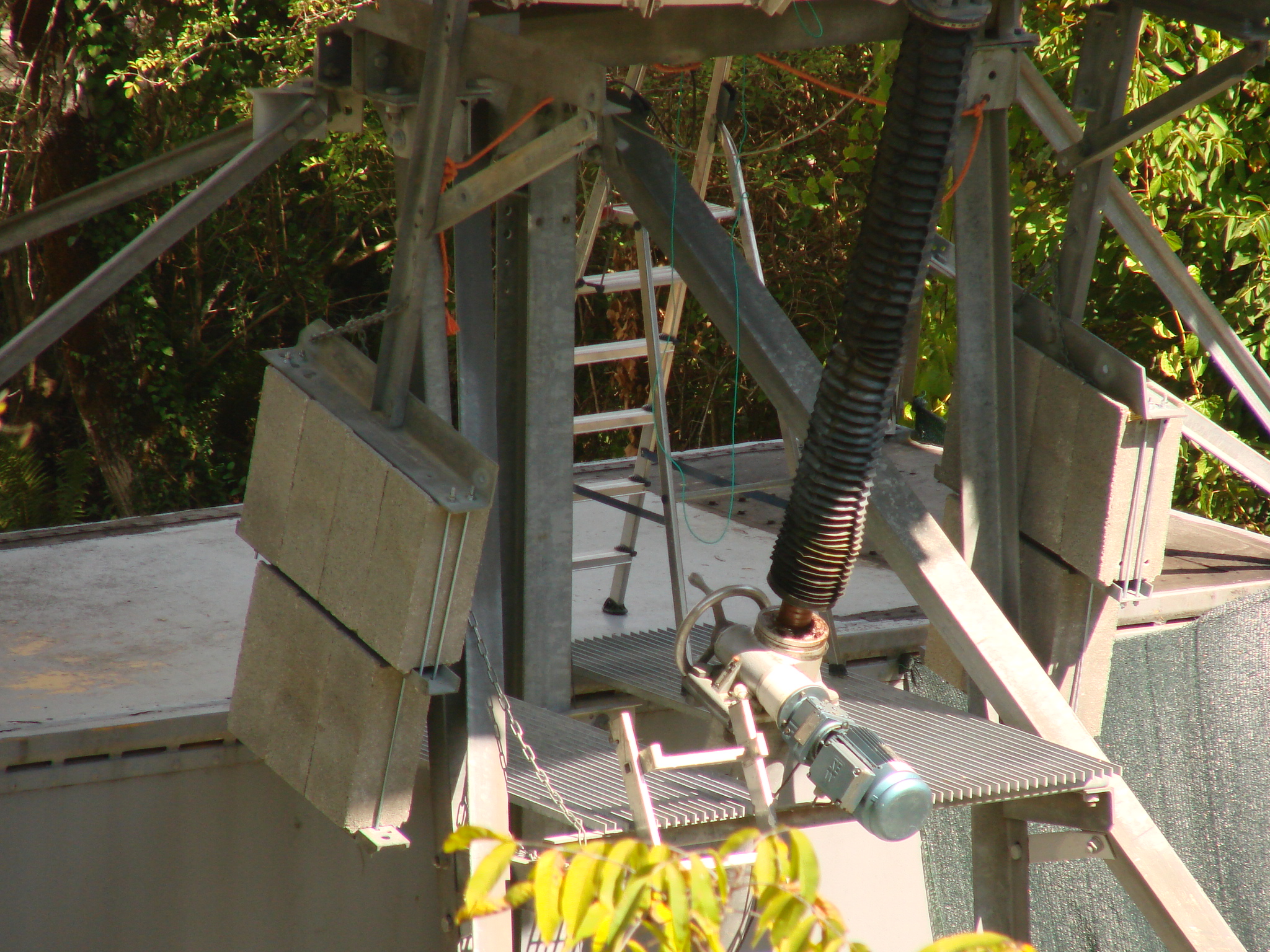
Fig.2 - Sao Giao Radio Telescope with new counter weights
Next year I plan to mount an other motor/reduction combination.
However with these limitations I still wanted to capture a source and I did; see attached.
Everything is not calibrated correctly yet( elevation, azimuth, time, focuspoint etc).
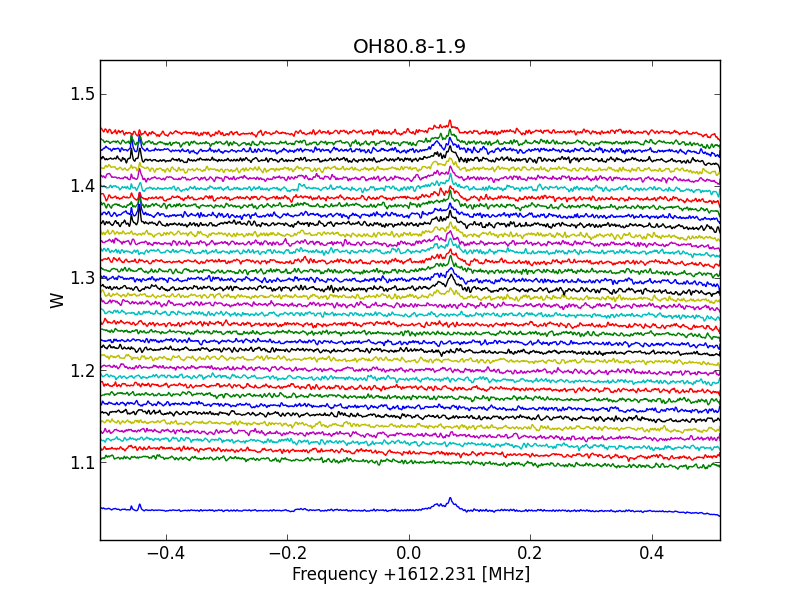
Fig.3 - OH80.9-1.9 all lines
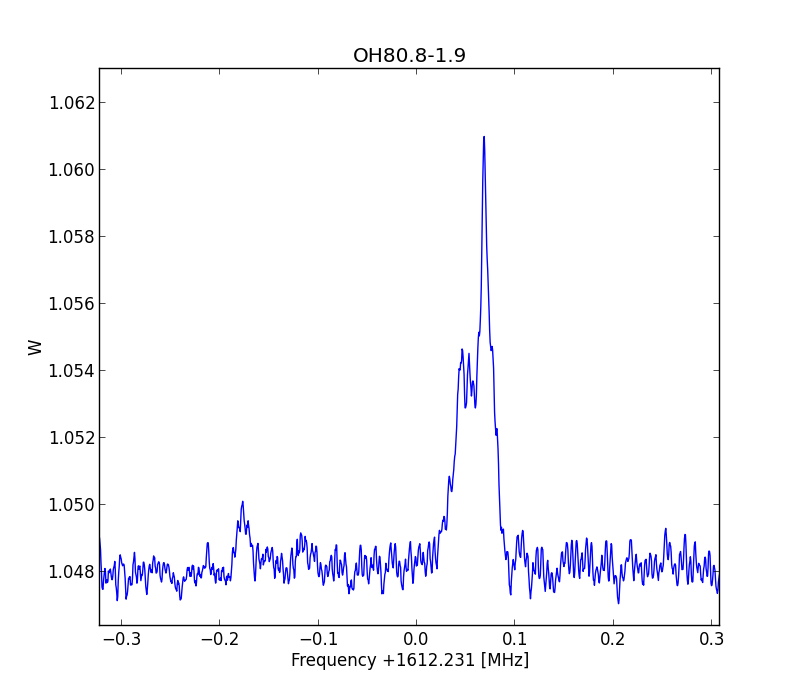
Fig.4 - OH80 220615
The result is a maser on 1612.231 MHz called OH80.8-1.9 (RA 20 46 25.54 DEC +40 06 59.4). The highes peak is about 520 Jy.
It is one of the strongest masers and passed my location almost through the zenith.
Also it was fun to see that the telescope lost track in azimuth at that moment.
The 180 deg azimuth rotation happened too fast and with the 7deg/ minute azimuth speed it lost track.
I constructed an open can feed for 1665MHz beforehand, but decided to try it on 1612MHz anyway.
The sw used is cfrad2.exe again. The lower 14 lines are reference measurements; each line is 5 minutes integration at 1.024MS/s.
Next the dish was pointed to the source; giving the following higher lines. Next the result lines were avaraged; this is the bottom line. On the second graph you can see the zoomed in result.
OH80.8 is a dying star, and is pulsating and so blows away it material very fast, and cooling down more and more until no radiation is emitted anymore.
The two peaks in the graphs give the velocity of the shell; one from the front and the other from the back of the OH shell.
With the doppler formula you can calculate the velocity of the shell.
However, this star does not behave like other OH stars. The high frequency peak is much greater than the reddening peak. and stays that way.
On other frequencies; other masers can not be detected or very weak or are one time events. The general idea is that this maser is not exited from the star itself, but by the UV-radiation of the nearby Cyg OB2 region.
As a comparation I have added the graphs from the 25m Dwingeloo telescope and Stockert Astropeiler. As said before; the horizontal scale is in km/s and negative is an approaching velocity.
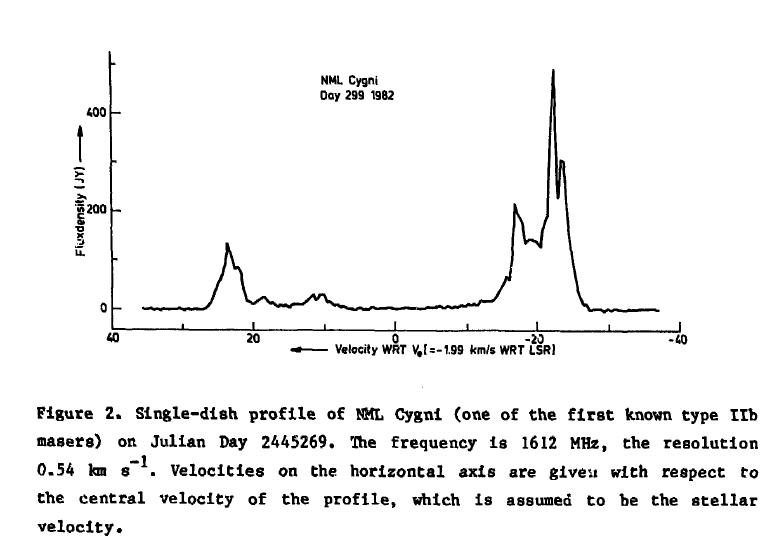
Fig.5 - NML Cygni Dwingeloo Radio Telescope 1982
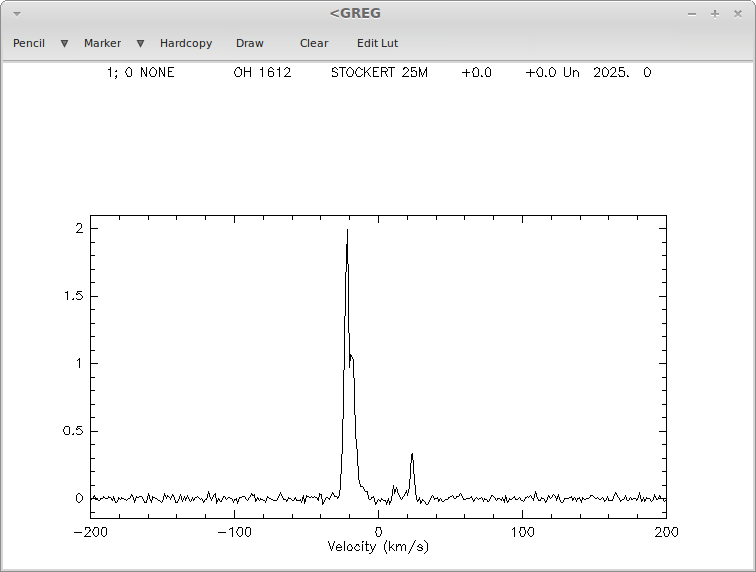
Fig.6 - OH80 reference Stockert Oct. 6th, 2012
The feed was optimised for 1665MHz, but obviously worked on 1612MHz also.
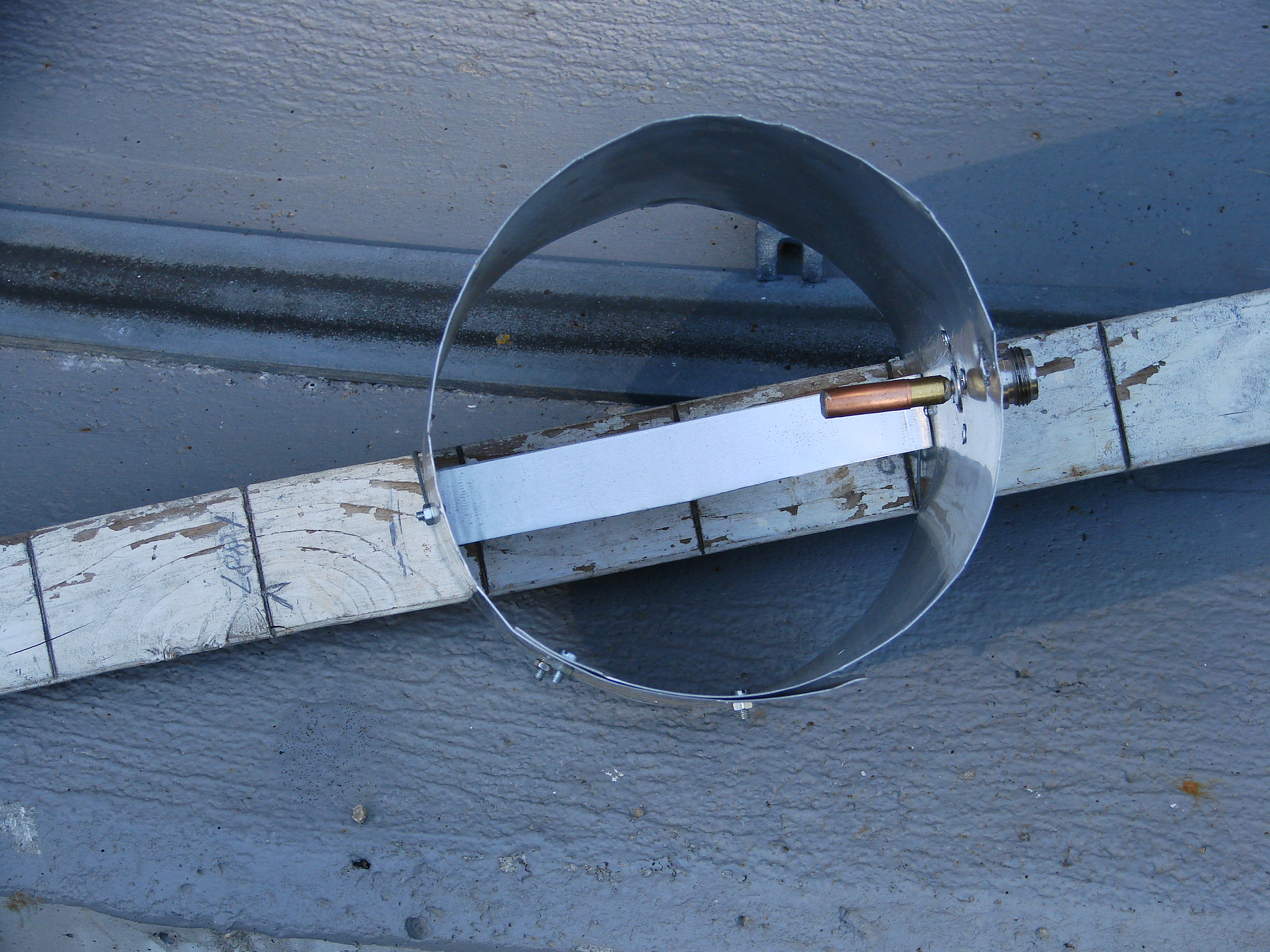
Fig.7 - OH can 1
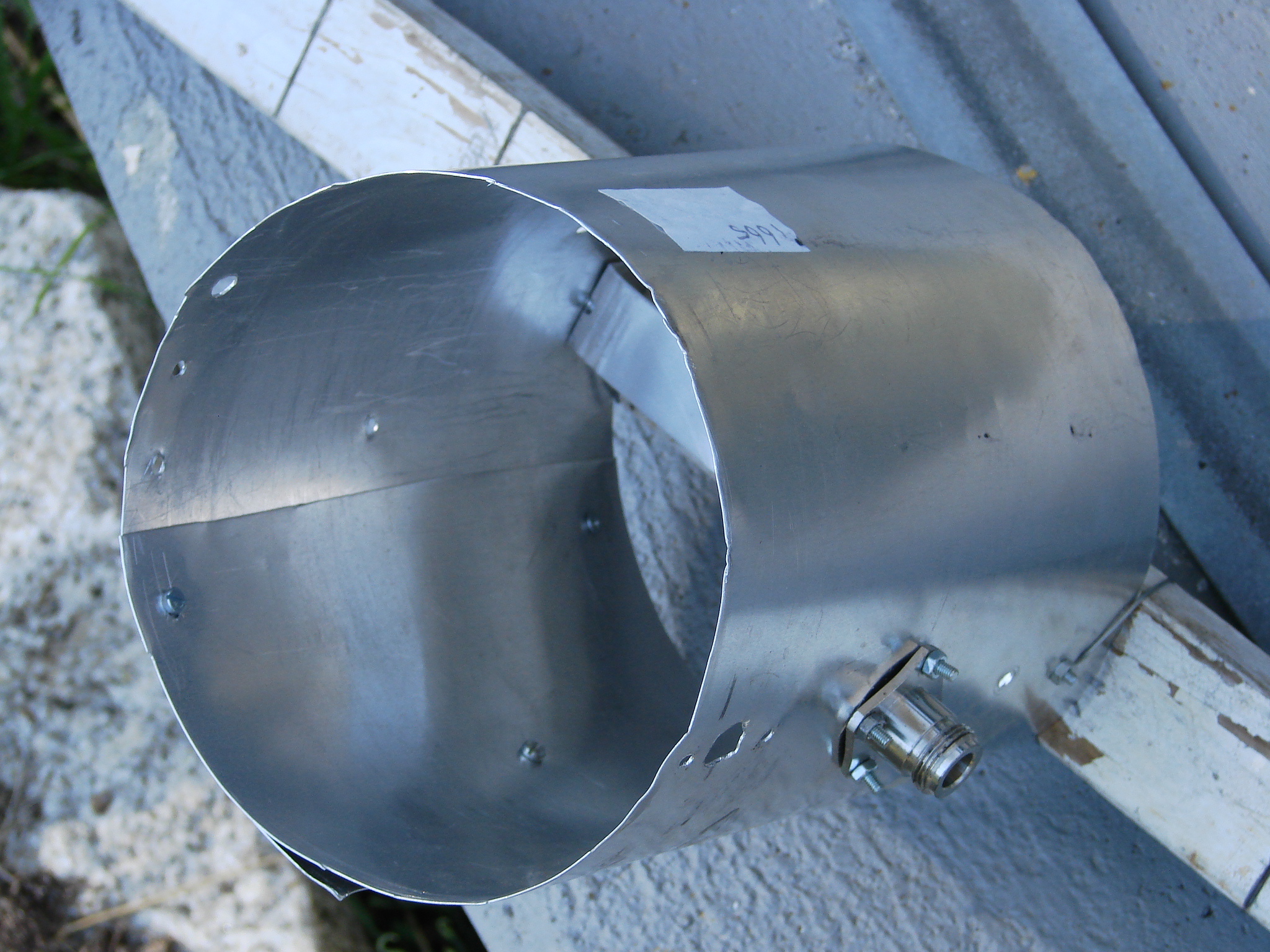
Fig.8 - OH can 2
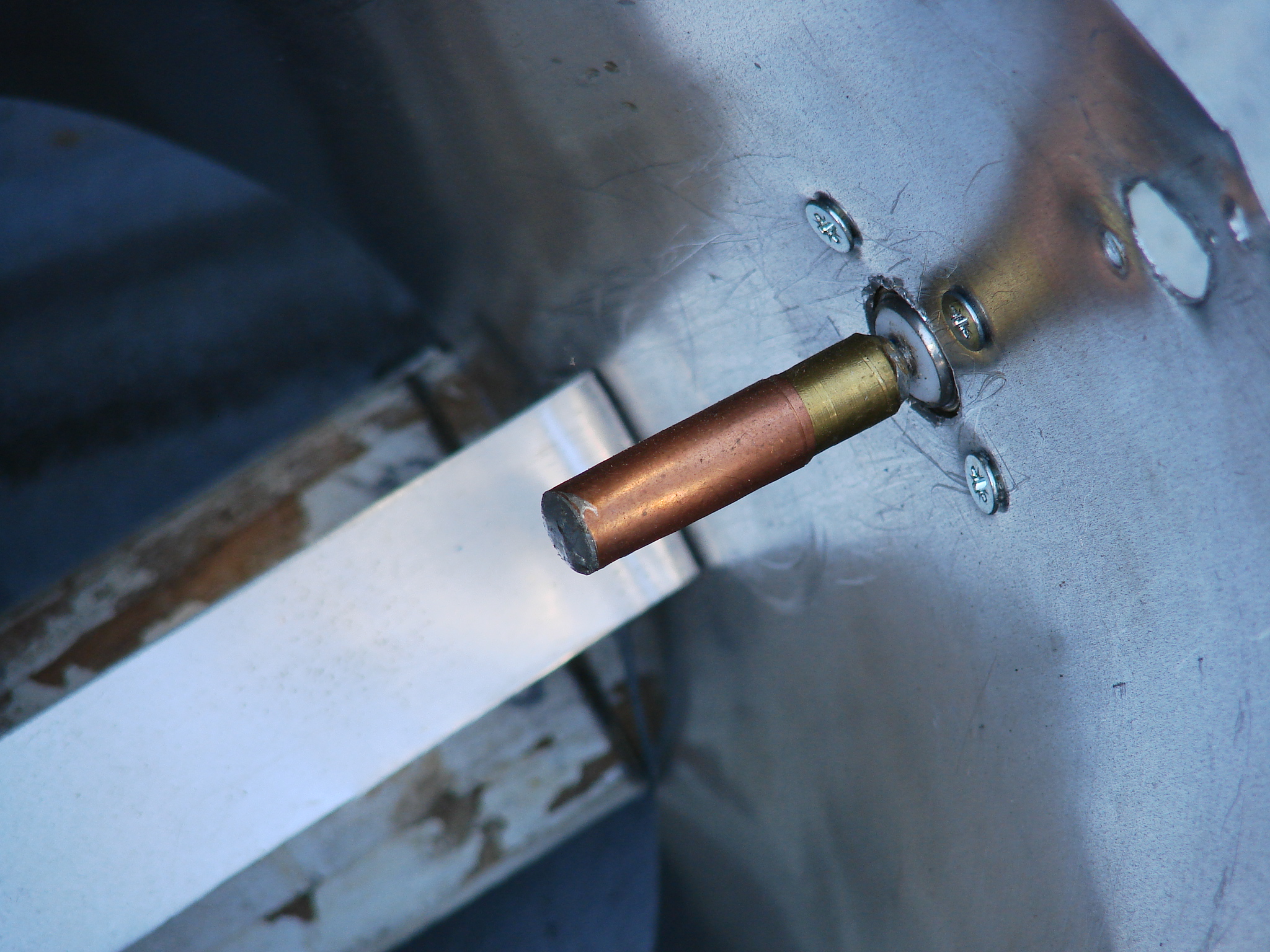
Fig.9 - OH can 3
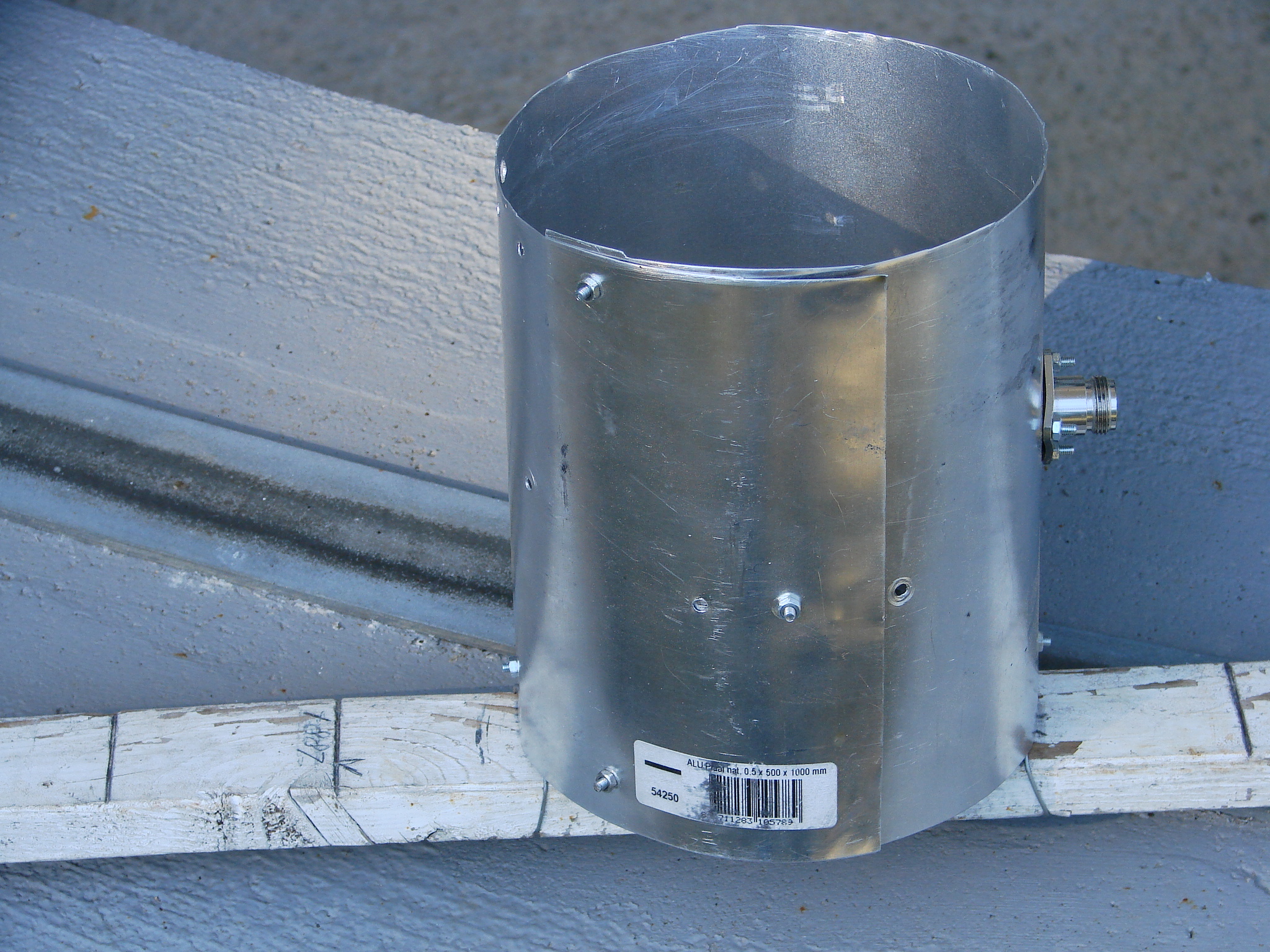
Fig.10 - OH can 4
Lenght of the tube 170mm
diameter 141mm
strip reflector location 25.2 mm from far side
strip width 21mm
probe lenght 35mm
probe location 95mm from far side
aluminum sheet thickness 0.5mm as a test, but it is better to take 1mm or more.
Important is that the rimm of the n-connector does not protude above the inside surface of the tube.
I compared the SGRT delta frequency (=velocity) of the hydroxyl shell around the super red giant star NMLcygnus with the result of the Astropeiler 25m dish of 3 years ago.
It looks like in 3 years the velocity has increased, with 370 m/s/year.
The diameter of this OH shell is huge already; so how large can it become.
Eventually it will become a super nova; all the astronomers agree on that. Nature of NML Cygni ; Morris and Jura
But what will be the moment of the triggering.
Because this star already has expelled much material, so that the surrounding is a thick mist of material, some astronomers doubt if we even can see the moment of explosion.
Also intersting is; how does this star becomes so big; is it hoovering another one; but then the instream would be detectable.
As you can see from the graph it has multiple peaks and is more complex then OH104; the star has multiple OH shells with different expanding velocities.
All and all again a very interesting object.
Original spectra of OH observation
You can use excel or the python script from the sw project here to analyse the OH source yourself.
References;
Nature of OH/IR stars; J.Herman
Here is some more info about OH80; this red giant has been given several names, see
https://en.wikipedia.org/wiki/NML_Cygni
http://www.jb.man.ac.uk/~amsr/NML/node1.html
Modern Radio Astronomy 2013
Michiel Klaassen december 2015